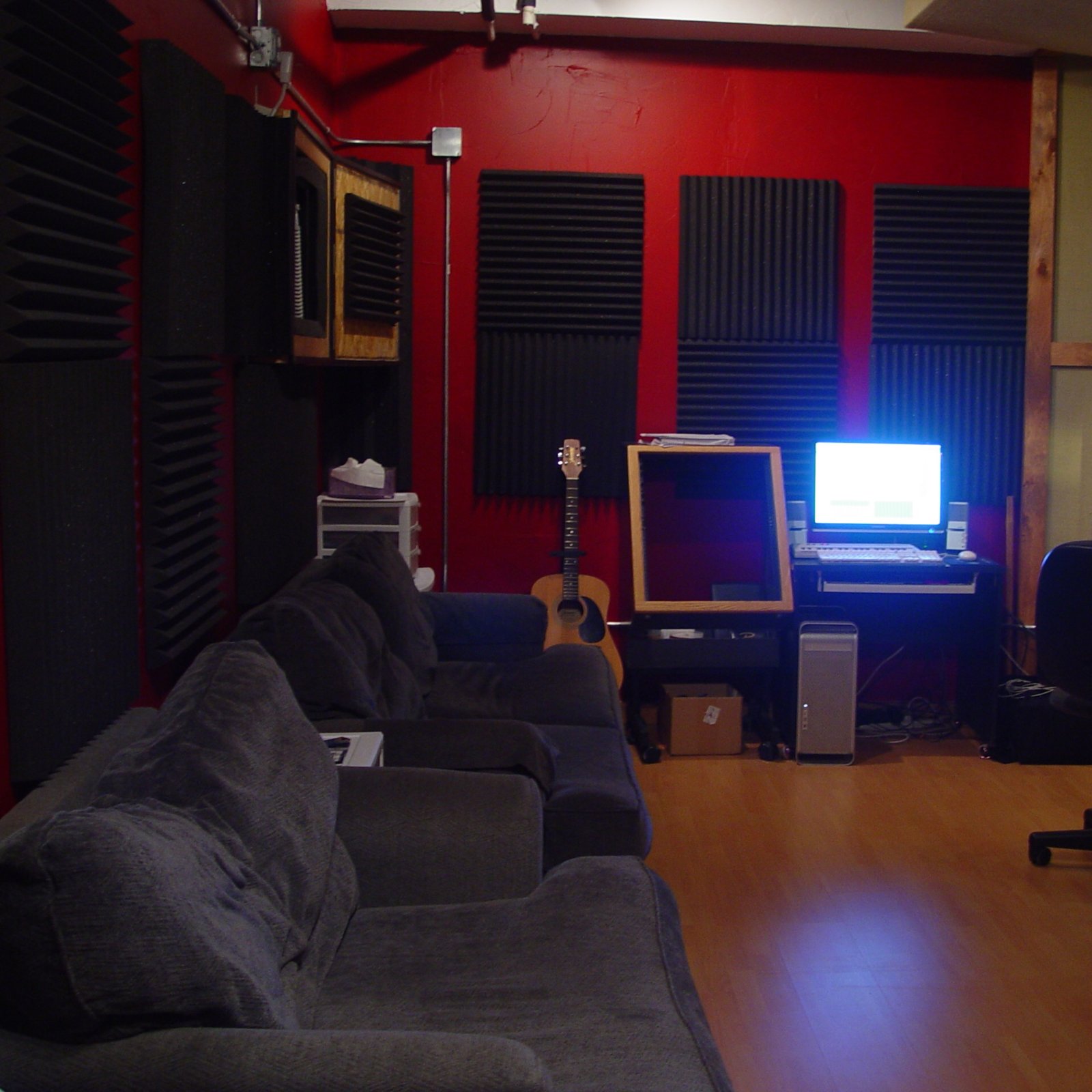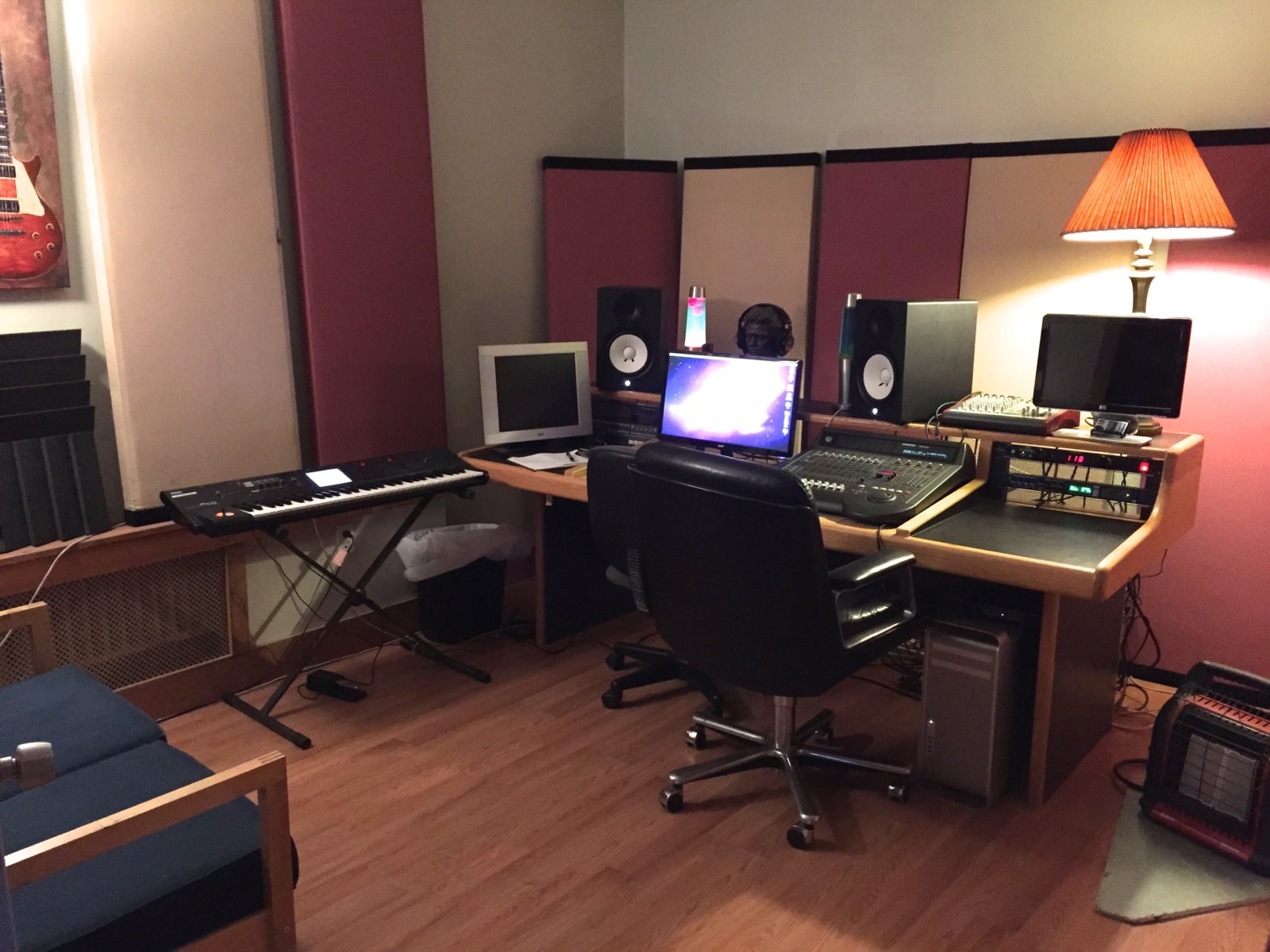I’ve remodeled my room and turned it into an office. Things that used to absorb a lot of sound like the carpet, bed and curtains are now gone. I’ve got the new furniture in, but my online friends say I sound like I’m talking to them from the bathroom, lol.
My questions are:
1.) Where should I put sound foam? My microphone (used for talking to friends) sits just to the left of me on my desk in a corner of the room.
2.) Where are good places to hide foam panels from sight, if possible?
3.) If I can’t hide them, can I put posters over them and still benefit from their intended use?
Bonus question: The left part of my computer desk is where I keep my microphone, and I’ve boxed it in using this foam product.
https://www.amazon.com/gp/product/B00TP7C9YY/?tag=r06fa-20
Is this not a good product, and if so what SHOULD I get if I want less bathroom/echo/acoustic sound when I talk?
Thanks for any help~
Tags
Comments
Purple Noise, post: 453183, member: 50860 wrote: I’ve remodeled
Purple Noise, post: 453183, member: 50860 wrote: I’ve remodeled my room and turned it into an office. Things that used to absorb a lot of sound like the carpet, bed and curtains are now gone. I’ve got the new furniture in, but my online friends say I sound like I’m talking to them from the bathroom, lol.
My questions are:
1.) Where should I put sound foam? My microphone (used for talking to friends) sits just to the left of me on my desk in a corner of the room.
2.) Where are good places to hide foam panels from sight, if possible?
3.) If I can’t hide them, can I put posters over them and still benefit from their intended use?
Bonus question: The left part of my computer desk is where I keep my microphone, and I’ve boxed it in using this foam product.
https://www.amazon.com/gp/product/B00TP7C9YY/?tag=r06fa-20
Is this not a good product, and if so what SHOULD I get if I want less bathroom/echo/acoustic sound when I talk?
Thanks for any help~
Hey there, I’ve built 4 studios and a high end home theater, so I can attest to the importance of acoustic treatment, and applaud you for starting with the root of the problem.
To start by answering your questions:
1.) you want to place them in front, back, both sides, and especially the ceiling above. If you do some 2’x4’ size panels, 2x on either side of where your head/mic sits, 3x above, and 3x in front, 2x on the rear wall would be considered ‘standard / basic’ treatment. Hang them at a height where they are centered roughly at the height of your mouth.
Since your doing primarily voice you could completely cover the section of the room that your seated in, which I’m assuming is the front part. I’d personally start with them spaced out, and then add more to the section your seated, as needed.
Also since it’s primarily voice, you don’t have to worry much about bass trapping.
2) unfortunately your not able to hide the panels, best you can do is disguise them. Reason being is that voice frequencies move around like a tennis ball bouncing around the walls. So what’s directly in plain view from your seating position, is directly in line of the sound from your voice.
3) posters will reduce the effect of the panels in the voice frequencies, which is where you need them. The posters will reflect the voice. Yes poster covered panels will make an improvement over nothing, but really won’t be effective as needed, particularly with the thin 1” foam you’ve linked.
Your best bet is to cover them with a fabric that has a dyed (not printed) design on them. You want this fabric to be easy to breath thru when you put it up to your mouth. Dyed fabric allows the holes in the weave to remain, letting the sound into the absorber panel. Printed designs will fill those holes reducing the absorbtion. You could also cover them with moving blankets, or plain fabric like tight weave burlap. You can use 3m fabric spray adhesive to do this. You could also forget the foam, and just use moving blankets, perhaps framed. Either way you’ll want to make sure the fabric, and foam is fire resistant. The foam, of its legit, should be already, but check w the manufacturer. Fabric can be ordered fire treated from a place like guilford of Maine, or you can order a fire retardant spray, to save significant cash, at the expense of an hour DIY.
Bonus points-
I’m not familiar with the brand foam you’ve linked. A simple way to verify its effectiveness, is simply to email the seller or company, and ask them to provide the acoustical test data, and ask if it complies to fire code, for your intended application.
If they can’t provide test data, I’d pass. 1” acoustical foam is going to perform about the same among different brands. Other foams that LOOK like acoustic foam however will not. So the test data isn’t really for the purpose of analyzing performance, rather as a fail safe that the company bothered to spend the money to actually have it tested. I’d still take the next step once I had the data and compare the chart to a known brand like aurelex and make sure the curves are in the same ballpark.
What you don’t want is packing foam, touted as acoustic foam, doing little for your rooms sound, and being a fire hazard.
I’ve had good results w an aurelex roomiator kit for my old bedroom and living room. On sale it was around $120. And I got like 4-6 panels. A few 2’x4’, couple 2’x2’, glued to a pegboard backing, hung like a picture frame.
You can also mount your foam or moving blankets, spaced off the wall, which will make them work better.
Here’s some pics of panels along walls around a desk. Notice the
Here’s some pics of panels along walls around a desk. Notice the large panel on the ceiling in the bottom pic. The ceiling panels are very important, since I’m an average room your head is usually closer to the ceiling than the wall.
Also, if you want the “real thing” you can look into Rigid Fiberglass, from a place like ATS acoustics, or even amazon. You can get 1” or preferably 2” panels, wraps them in frantic and hang them from “impailer” brackets, which are cheap, spikey, little metal brackets made for the purpose. Rigid fiberglass is what professionals generally use and is about the same price as a decent brand acoustic foam. It will outperform the foam.
If aesthetics are a concern to you, then check out the pics that
If aesthetics are a concern to you, then check out the pics that Kyle posted above (kmetal ).
There are very effective and highly functional acoustic treatment devices that are also beautiful to look at - beautiful fabrics, some even have art work screened into the fabrics.
But you need to know what your room needs first. I recommend doing an acoustic measurement of your space, so that you're not installing the wrong treatment. Don't just start randomly throwing up acoustic tiles on the walls... it might end up not improving anything (and wasting you money) or in some cases it could solve one problem while at the same time creating another.
Google "REW measurement system". The measurement software is free - although you'll need to either buy, rent or borrow an SD Omni directional mic designed for measurement. They're not really all that expensive- but you will need one to do a proper measurement of your room.
Acoustics is an applied science involving physics and geometry. There are no "quick and easy" answers if you want proper results.
-d.
As an aside, you may want to consider a speaker calibration syst
As an aside, you may want to consider a speaker calibration system for your speakers.
Both IK Multimedia and Sonarworks make software based systems that allow you to measure your room - the IK ARC2 system comes with an Omni measuremt mic, and through a process of measuring a variety of "pulses" and tonal oscillations coming out of your speakers, and placing the mic in different areas of the space, the mic measures the response of your room and then adds a compensation algorithm to your speakers. I wouldn't rely on either system to do "brick and mortar" work though... meaning if you were relying on either system to correct your speakers in a room with no treatment in place at all, your expectations would be too ambitious.
And, those systems won't do anything for the acoustics of your room while you are actually recording. They are designed to give you refinement of what you are listening to when you are mixing your audio. They won't correct the room itself. That requires actual physical methods.
-d.






You're asking on a recording forum about room acoustic. Most of
You're asking on a recording forum about room acoustic.
Most of my answers would be aimed at recording signing or instruments.
But gamming and podcasting is a bit out of my area.
My first reaction was : OH NO ! Not foam !! You're better with proper acoustic pannels and bass traps.
But then you write about talking to your friends.
What you experience is the sound bouncing on audio reflective surfaces. In theory, in a square space you could place the foam in front of the speaker and on one side to eliminate bouncing echos on the walls. But it will unbalance the sound if you are to record or listen to music.
If you want to be inspired on cheap foam solution, there is this youtube series that may help. :